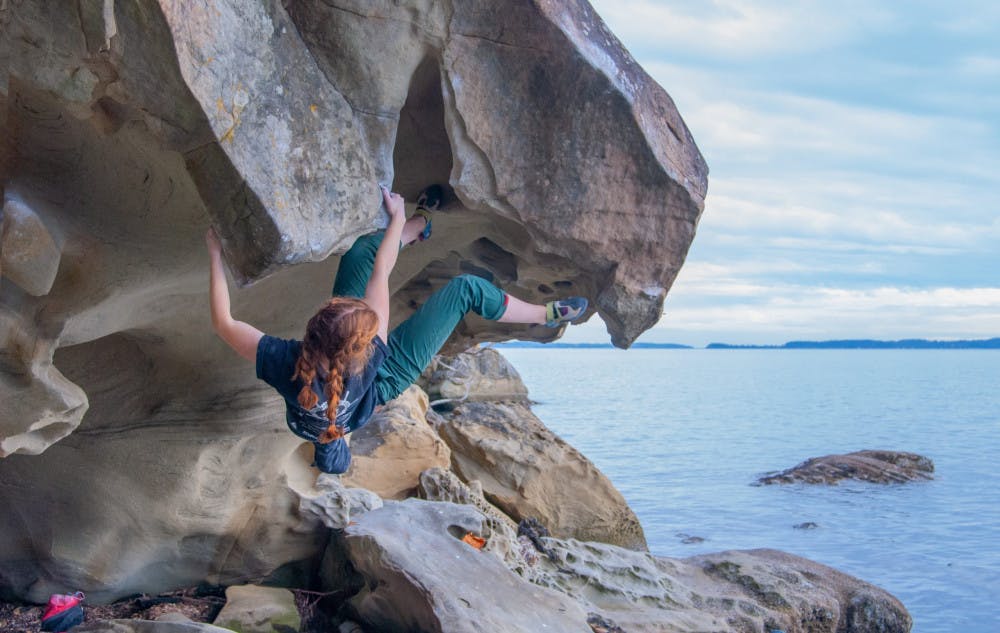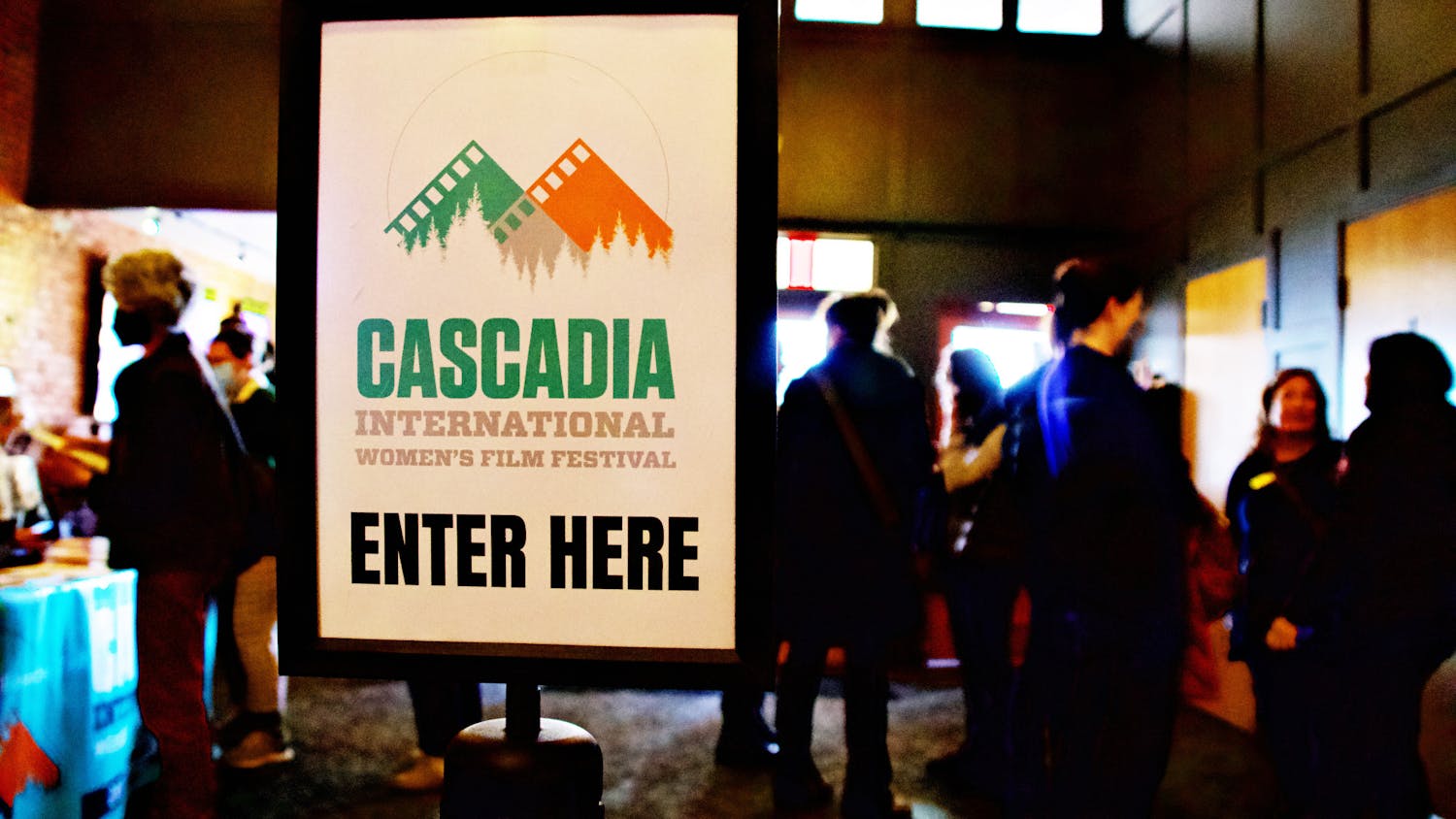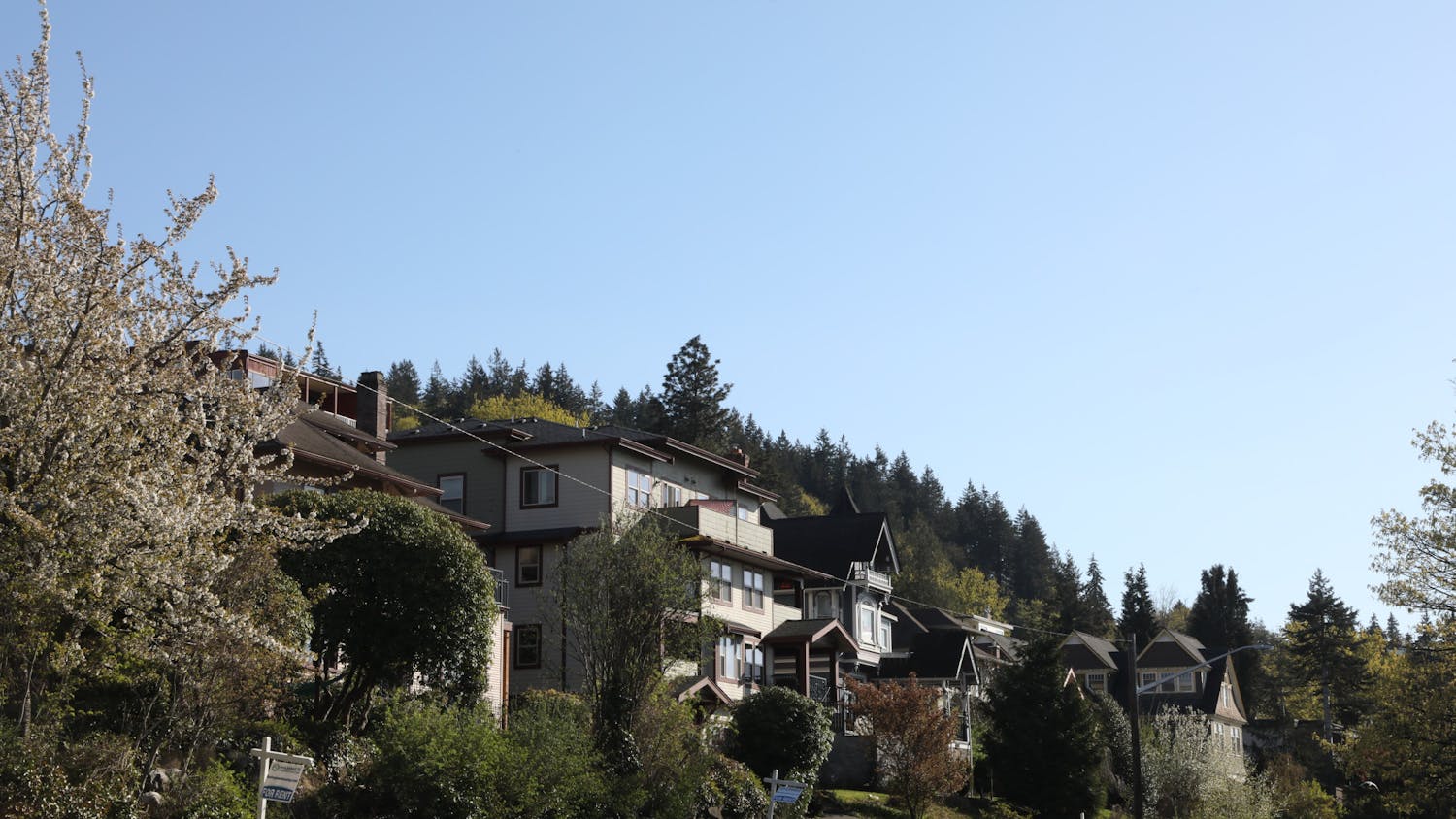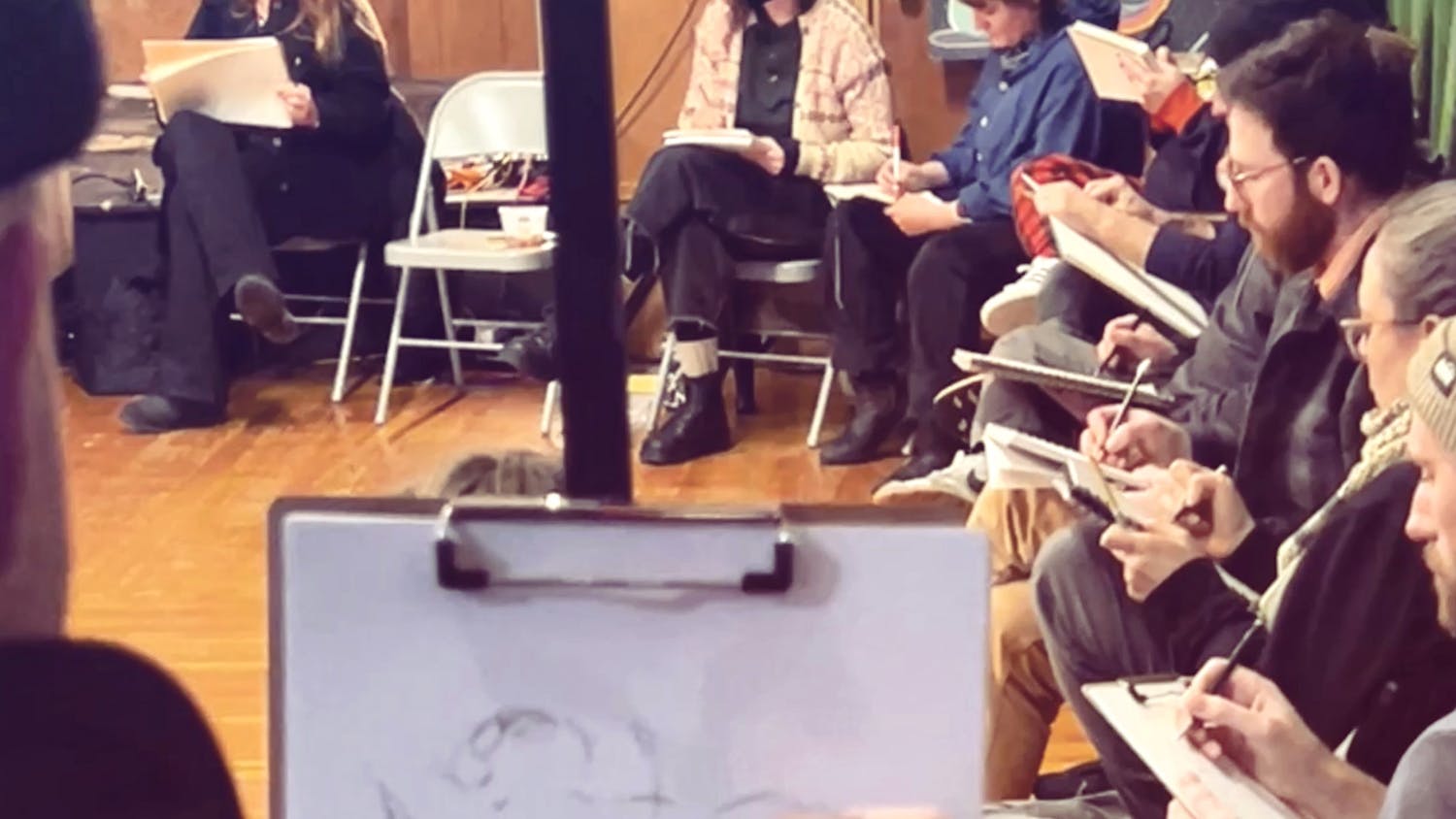Women climbers battle fear over desire to explore the outdoors

By Olivia Hicks
Climbing is a well-known sport in Bellingham. However, women climbers face obstacles in the gym and outdoors that men don’t.
Kira Walters, a third-year Western student, has been climbing competitively for 10 years, first in Everett. Joining the local climbing community brought new challenges, she said.
“Coming to Bellingham freshman year is the first time I noticed feeling slightly out of place in the gym just because there were a lot of men,” Walters said. “I had no idea until coming here how packed with men climbing is in reality.”
Walters described bouldering — climbing smaller rock formations without ropes — as hyper-masculine.
“It's kind of like when you walk into the Rec [Wade King Student Recreation Center] and you see the weight room,” Walters said. “I've never gone in there.”
“Beta-spraying” is when someone gives advice on a climbing technique and, Walters said, it is almost always unsolicited. “Beta” is the climber’s route and when someone “sprays the beta,” they tell the climber where to put their hands or feet, Walters said. Despite climbing for seven years before attending Western, the first two months Walters climbed, she was repeatedly approached by men showing her how to complete a climb.
“I think that the one thing that made it easy for me to be one of the few women at the gym was that I had the experience, so people did end up taking me seriously,” Walters said. “But I know it's not the same for everybody.”
Becca Marx, a third-year Western student, echoed Walters’ experience. While Marx only started climbing when she came to Western, she knows how unwelcoming the community can feel.
“I was working on this one problem and climbing by myself,” Marx said. “Then this guy walked up to me … and was like, ‘Oh, are you working on that?’ Then he just climbed it, flashed it right in front of me, and was like, ‘Yeah, you should just do it like that.’ Then he walked away, and then he came back and did it in front of me again. That was a little bit condescending.”
Outside of the climbing gym, there are other obstacles. Neither Walters nor Marx feels comfortable climbing alone outdoors, both because they do not want to get hurt climbing and because of the potential danger of being a woman in the wilderness.
Emily Gaarder, co-author of “The Gendered ‘Nature’ of the Urban Outdoors: Women Negotiating Fear of Violence,” said outdoor recreation spaces are a very small part of the overall picture of women's safety.
“However, that doesn't mean that girls and women don't experience objectification, sexual harassment and yes, rarely but sometimes, assault out in the wilderness,” Gaarder said.
Some women balance fear of violence or objectification with their desire to participate in outdoor recreation by bringing a group of friends, a dog or a cell phone, Gaarder said.
Marx said exploring alone outdoors, a familiar image in the media — if not a best practice for any climber — is particularly dangerous for women.
“I would love to buy a van and do the whole skiing, climbing and biking thing, but I also wouldn't want to do it by myself,” Marx said. “I've heard a lot of horror stories of women traveling by themselves and someone trying to break into their car while they're sleeping.”
“It's something that a lot of men climbers honestly don't understand and generally have not even been presented with the information of that being the biggest fear,” Marx said. “You're not worried about how you can't handle being outside, it's like, ‘Oh, no, I'm afraid of other people.’”
While men may not understand, a little information can make a difference, Walters said.
“I think that men in climbing can be super helpful for the women they climb with,” Walters said.
“I've had close guy friends who will leave space open for me to give information [about climbing technique] and then it kind of throws off people and makes the other person realize, ‘Oh, they're both here to climb, and they both know things,’ not just keep assuming that the one guy there is going to know everything, and the women there won't.”
Walters also said that men in the climbing community are recognizing this kind of behavior and calling it out more often.
Walters and Marx also noted that women of color face additional hurdles and are underrepresented; they said they know only a few women of color in the climbing community.
In 2016, Climbing Magazine cited a Clemson University study that said 1.5% of USA Climbing members and affiliates identified as African American. The numbers for mixed race made up 4.7%.
“If you don’t have any mentors, you don't see people who look like yourself or who look like a model of somebody who you could grow up into, then maybe … it is just kind of thought of as a white sport,” Gaarder said.
In media representation of outdoor recreation, the image associated with outdoor recreation activities is a white, college-educated, middle-aged man, said Kristi Fondren, co-author of “Women and the Wild: Gender Socialization in Wilderness Recreation Advertising.”
While analyzing outdoor recreation magazines published between 2008-2009, the “one ad that did have people of color or at least some diversity in the magazine was advertising an ‘at-risk camp’ for ‘urban kids’ to get outdoors,” Fondren said.
However, on a recent hiking trip on the Appalachian Trail, Fondren said she was surprised by the gender and racial diversity on the trail.
In certain climbing gyms, diversity is slowly increasing. Vital Climbing Gym in Bellingham aims to be a welcoming environment for all identities, said Celina Meza, Vital’s program manager.
Meza said Vital diversifies climbing by employing women of color, having equal coach representation in youth clinics, ensuring two-thirds of coaches are women and one-third are people of color in adult programming, offering scholarships for memberships and modifying yoga classes for different abilities. Vital, with locations in three states, has also been mindful of not buying affordable properties and, therefore, accelerating gentrification, Meza said.
“The climbing scene as a whole, historically, is definitely more male-dominated. It's definitely white-dominated,” Meza said. “There's a lot of reasons for this. … A lot of gyms in the United States are really expensive, and often they are on cheap real estate and involved in the gentrification of certain neighborhoods.”
Outdoor sports scholars Fondren and Gaarder said their biggest piece of advice to women wanting to try outdoor sports is to know they belong there and if they are objectified or harassed, it is not their fault.
“Don’t blame yourself or take responsibility … too often girls and women are made to feel like, ‘oh if I wouldn’t have sent the wrong signals, I'm dressed in a way I'm not supposed to be or maybe I shouldn't have been so friendly,’” Gaarder said. “None of that should ever be felt like it’s somebody's fault for wanting to bike in bike shorts.”





